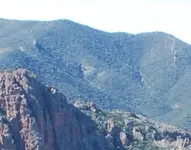deducer
Bronze Member
Why?, the Mulatos didn’t have a union, the point is this, The gold was taxed at every step of the operation, mining, extraction, refining, smelting, stamping and transportation, it all adds up to a lot.
and the labor was cheap.
The other thing is- I don't just do research, I also walk the walk, and I've been over enough terrain in the Superstitions and further south, to understand how harsh it really is out there in the desert and that helped me to understand that nobody carried more than they absolutely had to. At the time period we are concerned with, as far as "repository" the Superstitons were a very long way from the nearest point of civilization, or presidio. Nearest one was Tubac and even then, was only founded in 1752. Another presidio was founded in Tucson in 1775 but that was after the era of "deposits" had ended.




